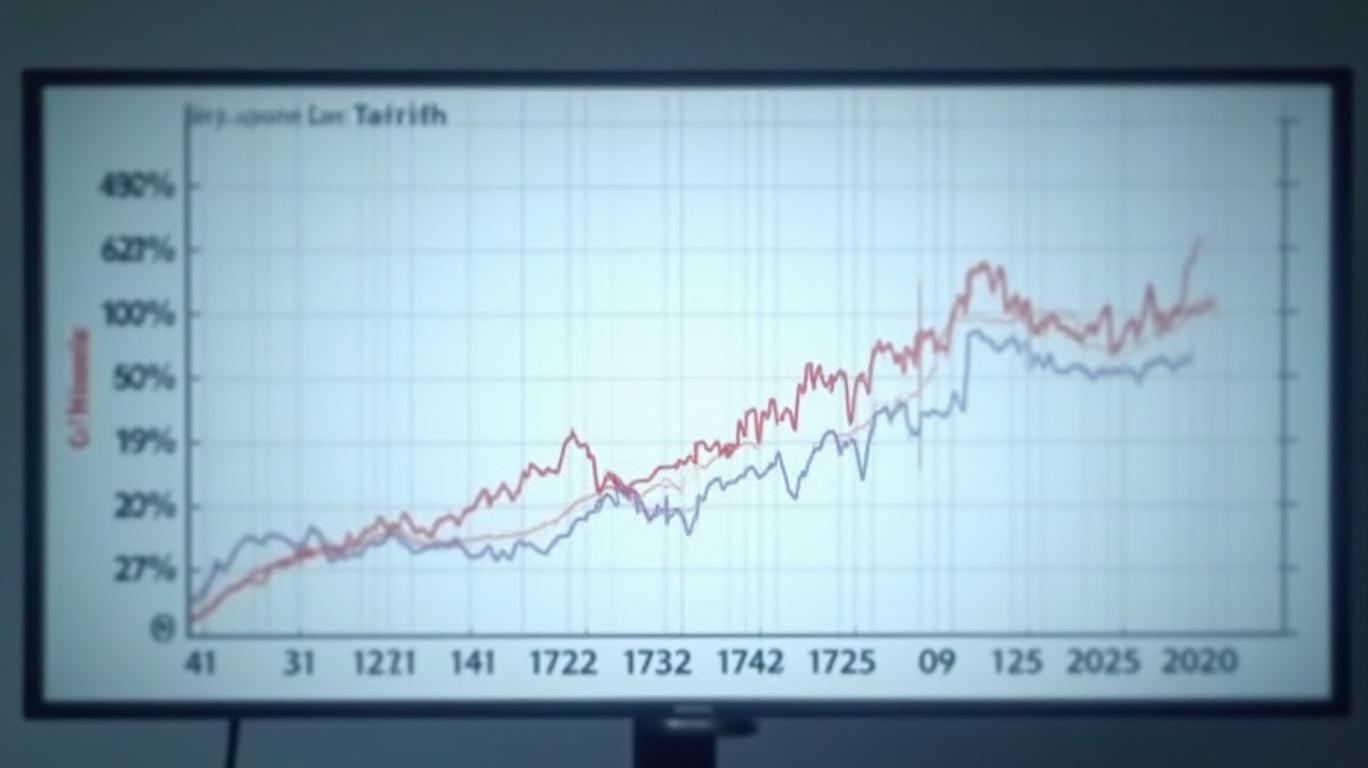Trade Tensions and Fed Uncertainty: Navigating the Futures Market Crossroads
The futures market has become a battleground for competing forces this week: U.S.-China trade negotiations, Federal Reserve policy indecision, and corporate earnings surprises are reshaping investor strategies in S&P 500 futures and beyond. As geopolitical and economic risks collide, traders face a critical crossroads—hold, hedge, or retreat.
Ask Aime: "Should I hold, hedge, or retreat in a volatile S&P 500 futures market?"
Lead: The Trade Deal That Almost Was
On May 9, 2025, S&P 500 futures oscillated between hope and caution as U.S.-China trade talks loomed. Investors speculated that tariffs—then at a record 145%—might be reduced if negotiations succeeded. Yet the index closed down 0.1% that day, underscoring the fragile balance between optimism and unresolved risks. The week’s 0.5% decline in the S&P 500 marked its first weekly loss in three weeks, a stark reminder that trade policy remains the market’s Achilles’ heel.

Trade Policy Crossroads: A Delicate Dance
The week’s defining event was the “substantive” U.S.-China talks in Switzerland, where tariffs and intellectual property disputes were on the table. President Trump framed the talks as a potential turning point, but the lack of concrete agreements kept volatility high.
Ask Aime: What's the outlook for S&P 500 futures with ongoing trade tensions?
- Key Data Point: A Reuters poll showed 92% of economists viewed Trump’s tariffs as harmful to business sentiment, with Q1 2025 GDP shrinking 0.3%.
- Corporate Impact: Tech stocks like Microsoft and Apple edged higher on trade optimism, but travel stocks like Expedia plummeted 7% amid fears of slower global tourism.
“The trade talks are a high-stakes poker game,” said analyst Clara Rivera of Global Markets Research. “Even a partial tariff rollback could boost S&P 500 futures, but the path to resolution is littered with landmines.”
The Fed’s Delicate Balance
While trade talks dominated headlines, the Federal Reserve’s cautious stance added to uncertainty. Chair Jerome Powell emphasized that tariffs had raised inflation and unemployment risks but declined to cut rates, citing insufficient data.
- Market Reaction: The 10-year Treasury yield rose to 4.38%, reflecting mixed investor confidence.
- Investor Dilemma: Institutional traders shifted to inverse and leveraged ETFs (e.g., Japan’s iFreeETF S&P500 Double Inverse) to hedge against Fed-driven volatility.
“Monetary policy is a lagging indicator here,” noted strategist Raj Patel at Macro Insights. “Investors are pricing in both the tailwind of trade optimism and the headwind of higher rates—a recipe for choppy markets.”
Market Volatility Drivers: Beyond the Macro
Corporate earnings and sector-specific trends further complicated the futures landscape:
- Winners: Insulet (PODD) surged 21% after beating earnings and raising its outlook, while Microchip Technology jumped 12.6% on strong guidance.
- Losers: Affirm Holdings (AFRM) collapsed 14% after issuing a weak revenue forecast, illustrating how individual company risks can amplify broader market anxiety.
Meanwhile, cryptocurrency and commodities markets mirrored equity volatility: Bitcoin breached $100,000, while gold and oil prices rose, signaling a flight to assets perceived as safe havens.
Conclusion: A Path Forward Amid the Crossroads
Investors in S&P 500 futures must navigate two critical variables: the outcome of U.S.-China trade talks and the Fed’s next move. Historical precedent suggests that even a modest tariff reduction could lift equity markets by 2–3%, while a Fed rate cut could add another 1–2%. However, risks remain:
- Trade Risks: If talks fail, tariffs could climb further, pushing U.S. inflation above 4% and forcing the Fed’s hand.
- Corporate Risks: Earnings disappointments like AFRM’s highlight the need for sector diversification.
The actionable takeaway? Balance optimism with hedging. Traders should consider:
1. Position sizing: Limit exposure to single sectors or equities.
2. Diversification: Pair S&P 500 futures with inverse ETFs or commodities like gold to offset volatility.
3. Monitor Fed signals: A June policy statement or Powell’s testimony could redefine the market’s trajectory.
As May 2025 unfolds, the futures market’s crossroads will demand both courage and caution—a reminder that in uncertain times, flexibility is the ultimate hedge.


_442a2dcc1749832873286.jpeg)
_e68fac6d1749831664430.jpeg)






